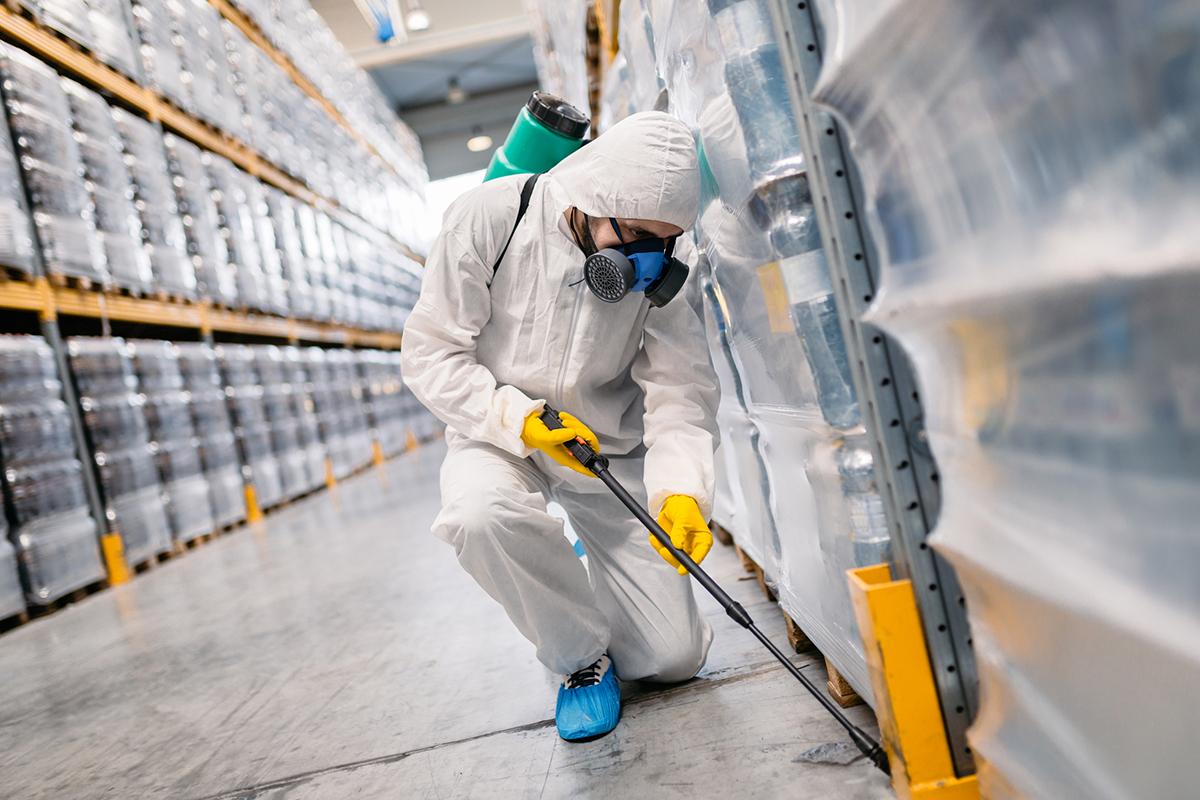Bed Insect Therapy Failure: Comparing Chemical Vs. Non-Chemical Solutions
In the world of bug control, specifically when taking care of the persistent problem of bed insects, the option between chemical and non-chemical therapy options can be a critical one. Both approaches offer unique advantages and downsides, influencing factors such as performance, safety considerations, and overall expense. By examining the nuanced information of each method, a more clear understanding of which path to seek in addressing a bed insect invasion can be obtained.
Effectiveness of Chemical Therapies
Chemical treatments for bed pest infestations have actually been extensively recognized for their rapid and potent efficacy in getting rid of these pests. When thinking about the efficiency of chemical therapies, it is crucial to understand that they can give a quick and detailed solution to a bed bug problem. Professional pest control men usually depend on pesticides to target bed bugs at numerous phases of their life cycle, including adults, eggs, and fairies. These chemicals commonly work by interfering with the bed insects' nerve system, resulting in paralysis and ultimate death.
Furthermore, chemical therapies have the benefit of offering residual effects, implying that they can remain to get rid of bed bugs also after the preliminary application. This residual action is specifically advantageous in combating any type of prospective re-infestations. Additionally, the quick activity of chemical therapies can bring alleviation to people facing severe bed pest invasions, permitting them to reclaim control of their home quickly.
Safety And Security Worries With Chemical Solutions
One crucial aspect that calls for cautious consideration when using chemical options for bed pest therapy is making certain the safety of residents and the setting. While chemical treatments can be effective in eradicating bed insects, they might posture threats if not handled correctly. Among the main safety and security concerns with chemical solutions is the possible damage they can trigger to human health and wellness. Exposure to specific chemicals used in bed bug treatments can lead to respiratory system issues, skin irritability, or various other adverse reactions, particularly in individuals with pre-existing problems or level of sensitivities. Furthermore, improper application or dosage of chemical pesticides can cause poisonous deposits sticking around in the treated area, posing lasting health and wellness threats to residents.
Moreover, the environmental influence of chemical remedies is another significant factor to consider. Some chemicals made use of in bed pest therapies may be dangerous to helpful bugs, wildlife, and ecological communities if they seep into the soil or water supply. It is vital to utilize chemical therapies deliberately, adhering to security standards, and taking into consideration much less hazardous alternatives to minimize these threats and make sure the safe and efficient management of bed insect problems.
Advantages of Non-Chemical Approaches
Considering the prospective security problems and environmental influence linked with chemical solutions for bed pest therapy, cockroach prevention exploring non-chemical methods offers an appealing alternative with several distinctive benefits. Non-chemical treatments are ecologically pleasant, as they do not add to air or water contamination, making them a sustainable selection for insect control.
Additionally, non-chemical options can be reliable in targeting bed insects, consisting of hard-to-reach locations where chemical treatments may not permeate - A1 charlotte bed bug exterminator. Approaches such as heat treatment, vacuuming, vapor cleansing, and bed mattress coverings provide comprehensive eradication without the use of harmful chemicals.
Limitations of Non-Chemical Treatments

Additionally, non-chemical therapies usually require several applications to accomplish effective elimination. This can be time-consuming and might not always ensure complete elimination of all bed pests and their eggs, particularly in surprise or hard-to-reach places.
In addition, the success of non-chemical treatments heavily counts on correct application and thoroughness, which can be challenging for individuals without professional competence. Insufficient application of non-chemical methods may lead to incomplete obliteration, bring about consistent invasions and the requirement for additional treatments.
Consequently, while non-chemical treatments have their advantages, it is vital to acknowledge these limitations and consider them when figuring out one of the most reliable approach for managing bed insect invasions.
Cost Contrast: Chemical Vs. Non-Chemical Options
Given the limitations associated go to these guys with non-chemical therapies, a crucial aspect to assess in the context of bed insect monitoring is the expense comparison in between chemical and non-chemical alternatives. In comparison, non-chemical treatments like warmth therapy or steam can be more pricey, with prices varying from $1,000 to $6,000 for a whole home. While the Check This Out preliminary price of chemical therapies may seem reduced, numerous treatments may be required to fully eliminate the invasion, potentially increasing the general price.
Final Thought

Taking into consideration the prospective safety concerns and environmental impact connected with chemical options for bed pest therapy, checking out non-chemical methods presents an encouraging alternative with several unique advantages.Offered the constraints connected with non-chemical treatments, a necessary element to assess in the context of bed pest management is the price comparison between chemical and non-chemical choices. In comparison, non-chemical therapies like warm therapy or vapor can be much more expensive, with costs varying from $1,000 to $6,000 for a whole home. While the initial cost of chemical treatments may appear lower, numerous therapies might be required to fully get rid of the infestation, potentially boosting the general cost.In conclusion, when contrasting chemical and non-chemical bed bug treatment alternatives, it is essential to take into consideration performance, safety, advantages, limitations, and expense.